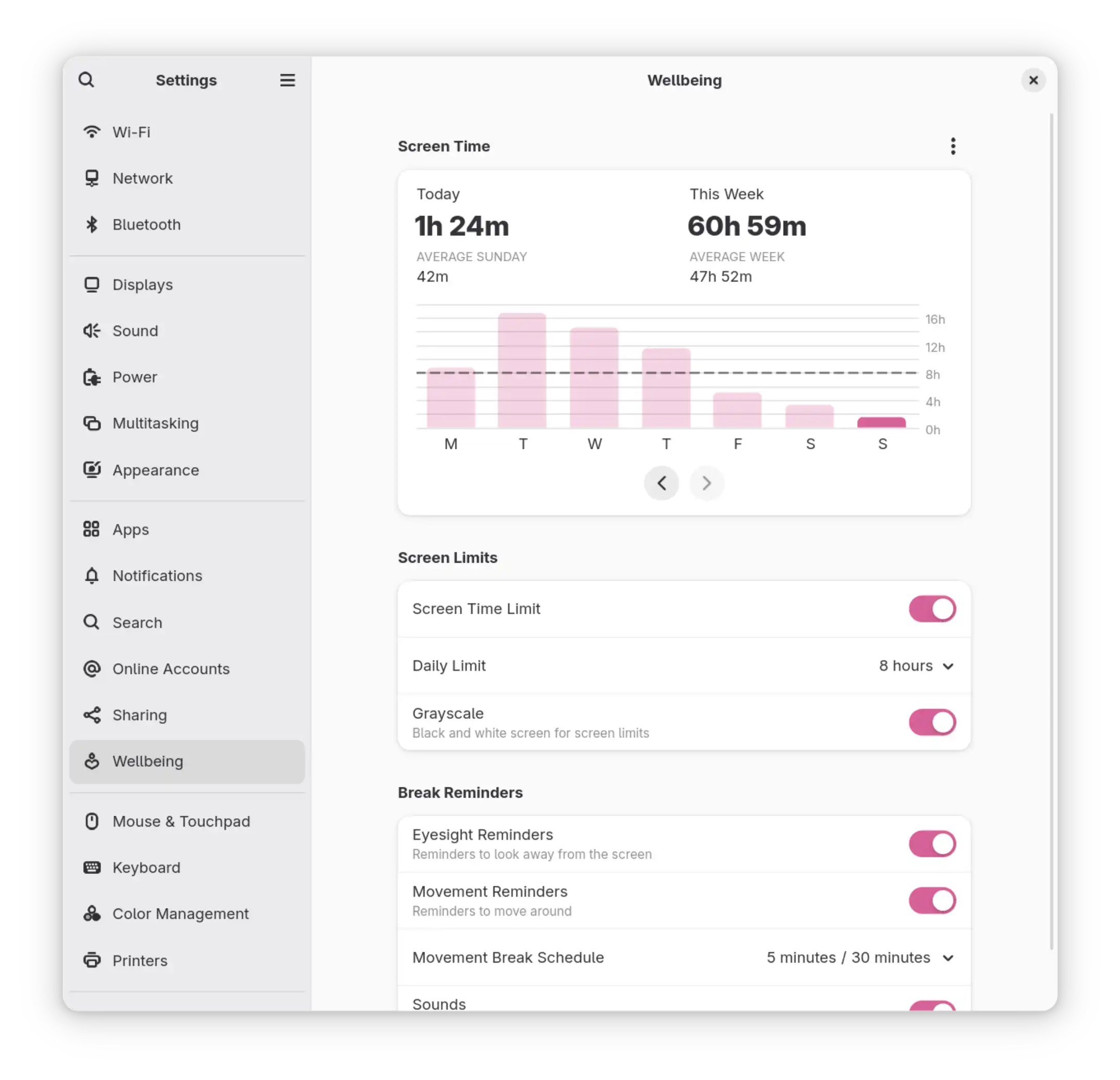Wellbeing in GNOME 48
Screen time tracking and break reminders
I use Fedora Linux with the GNOME desktop environment on all of my computers. A new version of Fedora (42, yay!) was released recently, and with it came a new version of GNOME (48). Each GNOME release is named after a city, and GNOME 48 is named “Bengaluru”, a city that I lived in for four years and absolutely love.
GNOME 48 is not a major update, but it comes with several quality-of-life improvements. While many of the features new to GNOME 48 already exist in some form in other desktop environments and/or operating systems, it is great to see them included in GNOME.
- Multiple notifications from the same application now stack. This reduces clutter and makes the notification panel better organised.
- You can now limit charging your device to 80%. This reduces the strain on your battery and will improve the battery health in the long run, especially if you keep your laptop plugged in all day.
- The default interface font was changed from Cantarell to Adwaita Sans, a modified version of Inter. I love how Inter looks. In fact, I use Inter widely across my site.
- My favourite new feature in GNOME 48 is Wellbeing, which gives you screen time information and regular eyesight and movement break reminders.

With Screen Time, I can now track how long I use my devices each day. It also gives me the option to limit the usage in a day, after which the screen turns greyscale. I have set the daily limit to be 8 hours, which while generous, helps me limit the time spent in front of the screen. The Screen Time feature in macOS is more advanced: it has features such as focus modes, time tracking on a per-app basis, and syncing usage data across devices. While I would love to see some of these features included in GNOME, I am still happy with the simple implementation that we currently have.
I find the break reminders in GNOME very useful. When I am working, it is very easy for me to become engrossed in my work and spend hours at a stretch staring at the screen without moving. Break reminders remind me every once in a while to take a break. The screen dims and a notification appears, telling me what to do.
- Eyesight reminders tell me to look away from the screen, into the distance, for about 20 seconds. This gives my eyes some much needed rest.
- Movement reminders tell me to get up and move around for a while. I take movement breaks for five minutes every thirty minutes. During the break, I get up, move around the room, stretch my body, and do some light workout. I also finish up small tasks such as organising my desk and my room, and refilling my water bottle. In some breaks, I simply stare out of the window and think about how I want to spend the next 25 minutes.
When these breaks end, there is an audible ding, indicating that it is time to resume work. I have found that taking these short breaks immensely improve my wellbeing, just as the name of the feature suggests.